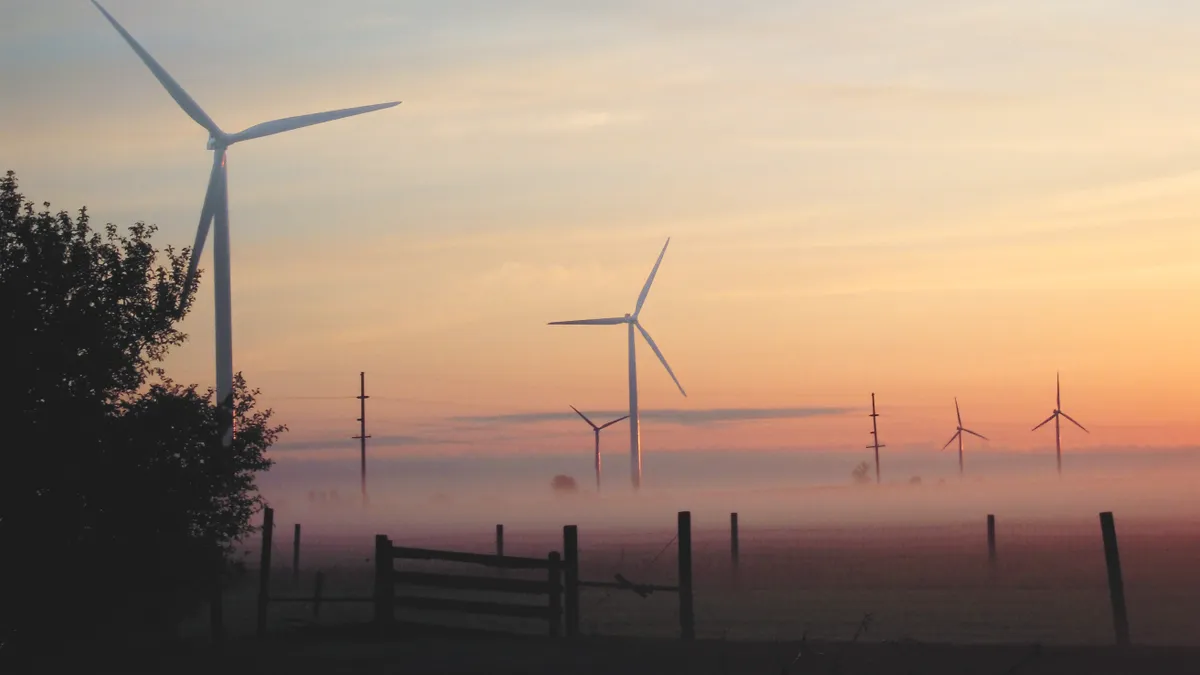Dive Brief:
-
Wind and solar will make up the majority of new electric generation capacity in 2020 and 2021, according to the U.S. Energy Information Administration's latest short-term energy outlook.
-
Over the next two years, EIA anticipates 61 GW of wind and solar additions to come online, replacing capacity leftover from rapid coal plant retirements. Coal-fired capacity is expected to decline by about 18.5 GW from last year through the end of 2020, while natural gas is expected to add 11.4 GW of capacity within that time.
-
Coal-fired generation is anticipated to drop from 24% of U.S. electricity generation in 2019 to 21% in 2020 and 2021, while natural gas generation is expected to remain stable at around 38% of U.S. electric power. Overall electric power generation is expected to drop 1%.
Dive Insight:
Electric power projections over the next two years are consistent with trends the sector has seen over the past few years — low cost natural gas and renewables are undercutting coal prices, leading to rapid plant retirements.
Though natural gas is projected to remain stable as a fuel source, EIA anticipates prices for the fuel will rise 9% in 2021, leading to higher wholesale electricity rates that year.
Meanwhile, renewables growth is expected to rise steadily, making up 19% of U.S. electricity production in 2020, and 22% in 2021, up from 17% in 2019.
Wind power capacity is expected to hit 125 GW in 2020, up 19 GW from last year, and 130 GW in 2021. The production tax credit for onshore wind secured an extension through 2021, meaning the lack of a credit isn't anticipated to have an impact on wind capacity until after 2021, according to EIA.
Solar installations will be dominated by utility-scale growth, expected to grow by 26 GW over the next two years. Small-scale solar is expected to add 11 GW in that time.
As a result of decreased electricity production from cooler temperatures forecast for this summer, decreased coal-fired generation, and an increase in renewables, carbon emissions from the broader energy sector are anticipated to drop 2% in 2020 and another 1.5% in 2021. Coal-related carbon emissions are anticipated to drop by 10.7% in 2020, while natural gas emissions are expected to rise 1.3%.
Finally, nuclear power generation is expected to drop slightly below its current 20% in 2021, based on the anticipated retirement of five reactors during that time.














